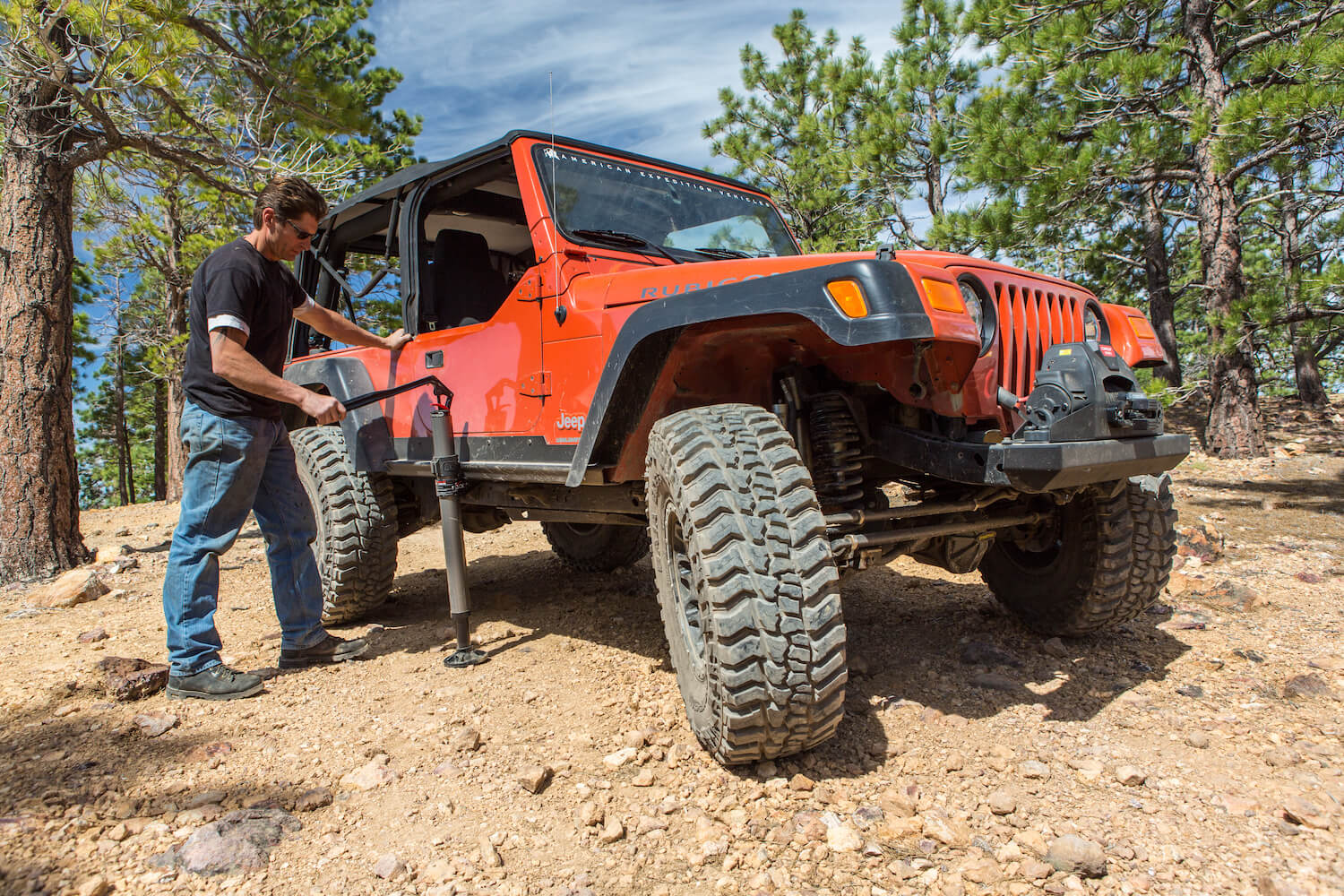
Photography by Harry Wagner
If you’re an off-roader, you probably aren’t the type of person who calls AAA when you get a flat tire. And that is assuming they could even reach you deep in the backcountry where breakdowns and flat tires are far more likely to occur. Carrying a jack that can safely lift your vehicle and allow you to repair it is critical to ensure you can drive home and avoid walking. Most vehicles come with a basic scissor jack or bottle jack, which is fine for stock vehicles. Add a suspension lift and larger tires, and that stock jack won’t be of much use anymore.
Fortunately, 4 Wheel Parts has a bevy of options for lifting your vehicle to change a tire, perform repairs, or simply help you get unstuck; regardless of terrain or tire size. The jacks fall into two basic categories; those that lift the vehicle from the axle (like the Pro Eagle floor jack) and those that lift the vehicle from the chassis (like the Hi-Lift). There are advantages and disadvantages to each jack, which we have detailed below. Which is the best choice for you will depend on your vehicle and whether or not it has sturdy rock sliders and steel bumpers, what kind of terrain you frequent, and what your budget is.
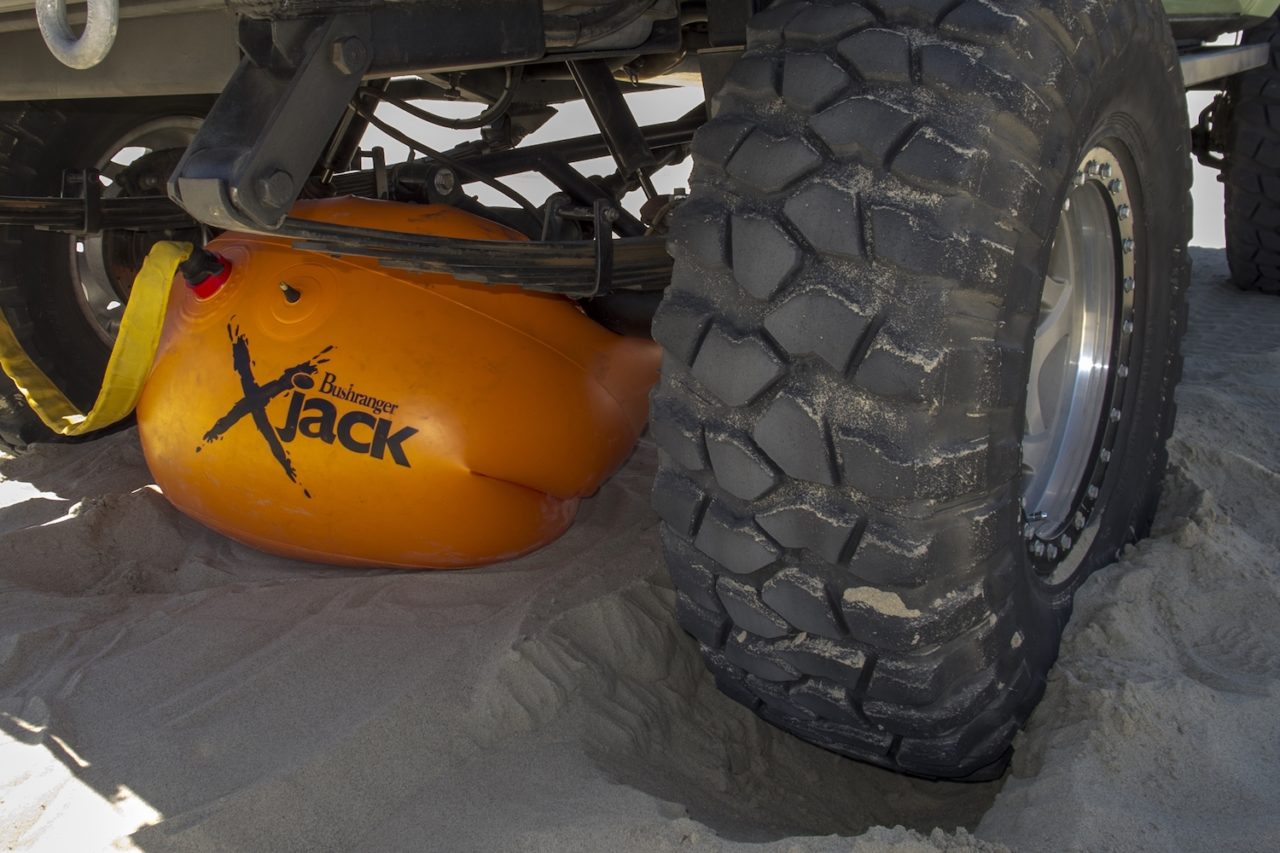
The ARB Bushranger X-Jack is very complete, right down to the laminated instructions and canvas carrying case. It even includes a patch kit, but we never needed it. If you spend most of your time off-road in the sand or snow, this is the jack for you.
ARB Bushranger X-Jack
If you spend a lot of time in the sand or the snow, ARB’s Bushranger X-Jack might but the best choice for you. This jack uses exhaust gases to inflate the bladder via a high temperature hose and lifts up to 30 inches high. A one-way valve keeps the jack from deflating until you are ready to lower the vehicle, even if you disconnect the hose to the exhaust. If the vehicle is not running it also has a provision to use another air source, such as a compressor or Powertank though the attached Schrader valve. The X-Jack has a lifting capacity of 4,400lbs and a wide base that resists sinking in soft terrain. And it comes with laminated instructions, a hose extension, gloves, patch kit, protection mat, and carrying case. Since it is soft, you don’t have to worry as much about where you stow the Bushranger X-Jack. We put it in the bed of our truck under our camping gear, but it could also easily be lashed to your spare tire to save space.
Pros
- Wide base does not sink
- Low profile design to slide under buried chassis
- Lifts 4,400 pounds
Cons
- Does not work with every exhaust configuration
- Plastic bladder can be punctured by sharp suspension components
- Bulky, even when deflated
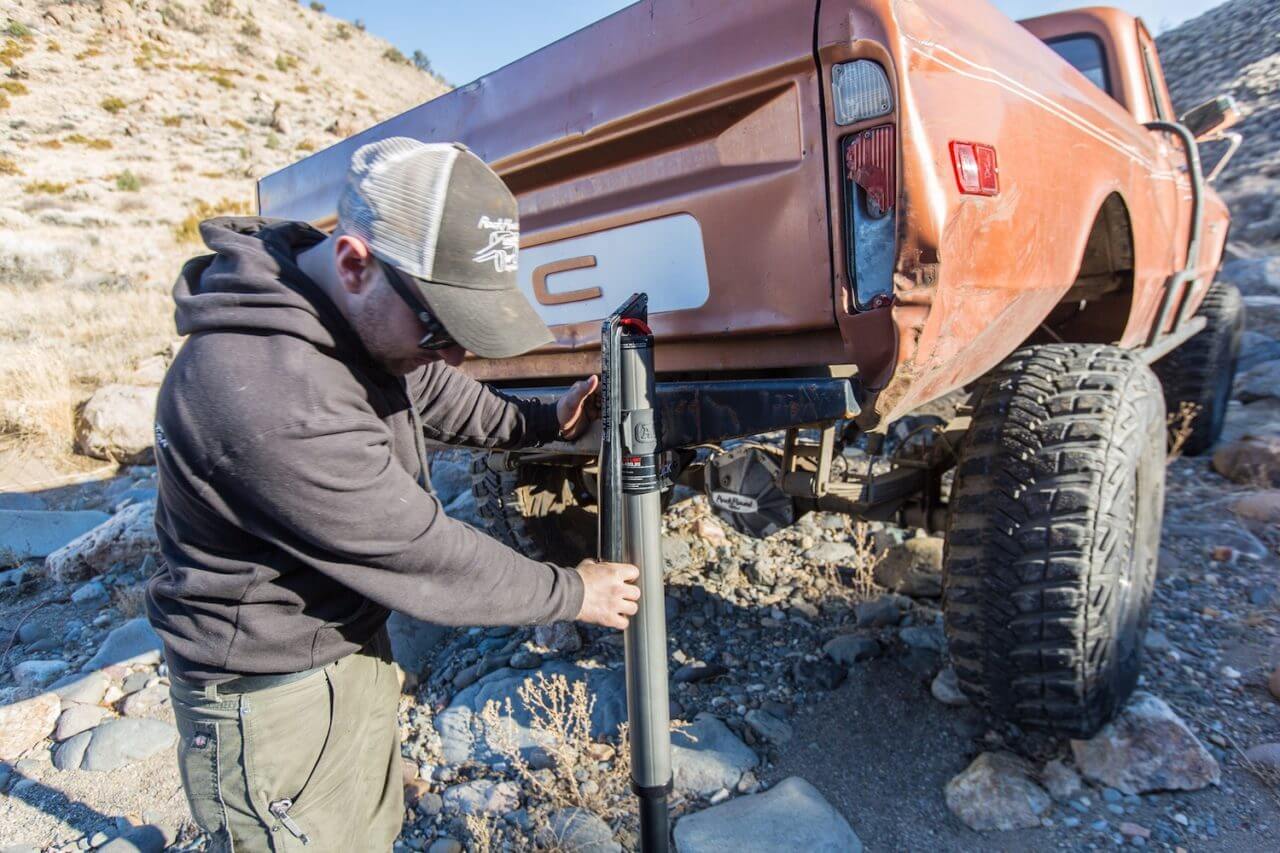
ARB’s JACK is to traditional farm jacks as ARB’s Air Lockers are to a welded differential. Both provide traction, but the Air Locker is a more elegant solution with a stronger carrier and the ability to lock and unlock on-demand to accommodate different conditions. The company’s JACK is no different. ARB is unapologetic about building what they feel is the best off-road jack on the market.
ARB JACK
The newest, and most expensive, offering on the market is ARB’s JACK (yes, the name is JACK). This is a clean-sheet-of-paper design that meets all the requirements for an off-road jack (wide range of lift heights, easy to use) in a design that is way safer and more stable than traditional farm jacks. Nine slots are machined into the JACK body to provide the foot with a variety of attachment points from as low as 6 inches all the way up to 26 inches. You can start lifting the vehicle right away and use the JACK’s full 22-inch range of motion. The ARB JACK can support 4,400 pounds, and in the off chance the working load is exceeded, an internal blow-off valve provides overload protection to safeguard both the JACK and, most importantly, your face from the vehicle dropping suddenly. Standard lowering is accomplished via the bright red lever of the JACK that features a two-stage descent feature. Dual lowering speeds mean that a precise or rapid descent can be achieved. We found the slow speed lowering extremely helpful for tasks such as reinstalling sway bar disconnects.
Pros
- High end construction
- Excellent stability
- Wide range of lifting
Cons
- Price
- No mount available
- Must be mounted upright
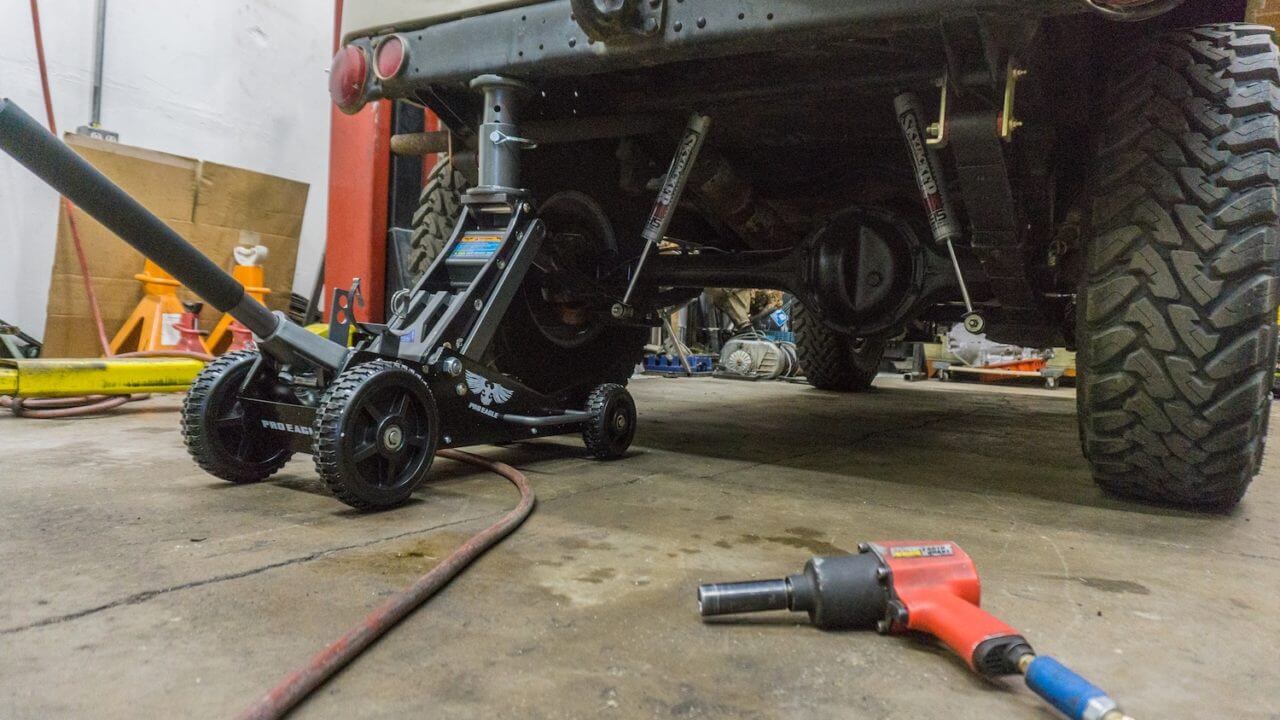
The Pro Eagle Kratos is the only one of these jacks that we use in the garage as well as out on the trail. The big wheels are useful for rolling over cracks in the concrete or air hoses. And while most floor jacks can only lift from the axles, with the 8-inch extension you can lift many vehicles from the frame with the Pro Eagle jack.
Pro Eagle Jack
Normal floor jacks are great in the shop, where you have a smooth surface to roll over. On the trail though the normal floor jack isn’t very useful, but Pro Eagle’s line of floor jacks shine. They address all the limitations of the usual floor jack by adding large diameter, composite (non-pneumatic) wheels with ball bearings and a skidplate to allow the jack to roll over dirt and rocks. These jacks are standard issue in the pits of desert races, and they are just as useful for the recreational wheeler as they are for racers. The 8-inch adjustable extension has a rubber grip pad and offers lift heights up to 28 inches on the 3-Ton Kratos model, giving the Pro Eagle jack an advantage over normal floor jacks even if you are using it in the shop and not just on the trail. At 60 pounds though, the Kratos weighs over twice as much as the ARB JACK, and even more than a Hi-Lift. Fortunately, mounts are available to securely store the Pro Eagle jack in the bed of your truck or cargo compartment of your Jeep or SUV.
Pros
- Large wheels roll over rocks and dirt
- Ability to lift from axle rather than frame
- Extension allows wide range of lifting height
Cons
- Wheels sink in sand and snow
- Heavy
- Fixed wheels don’t allow turning
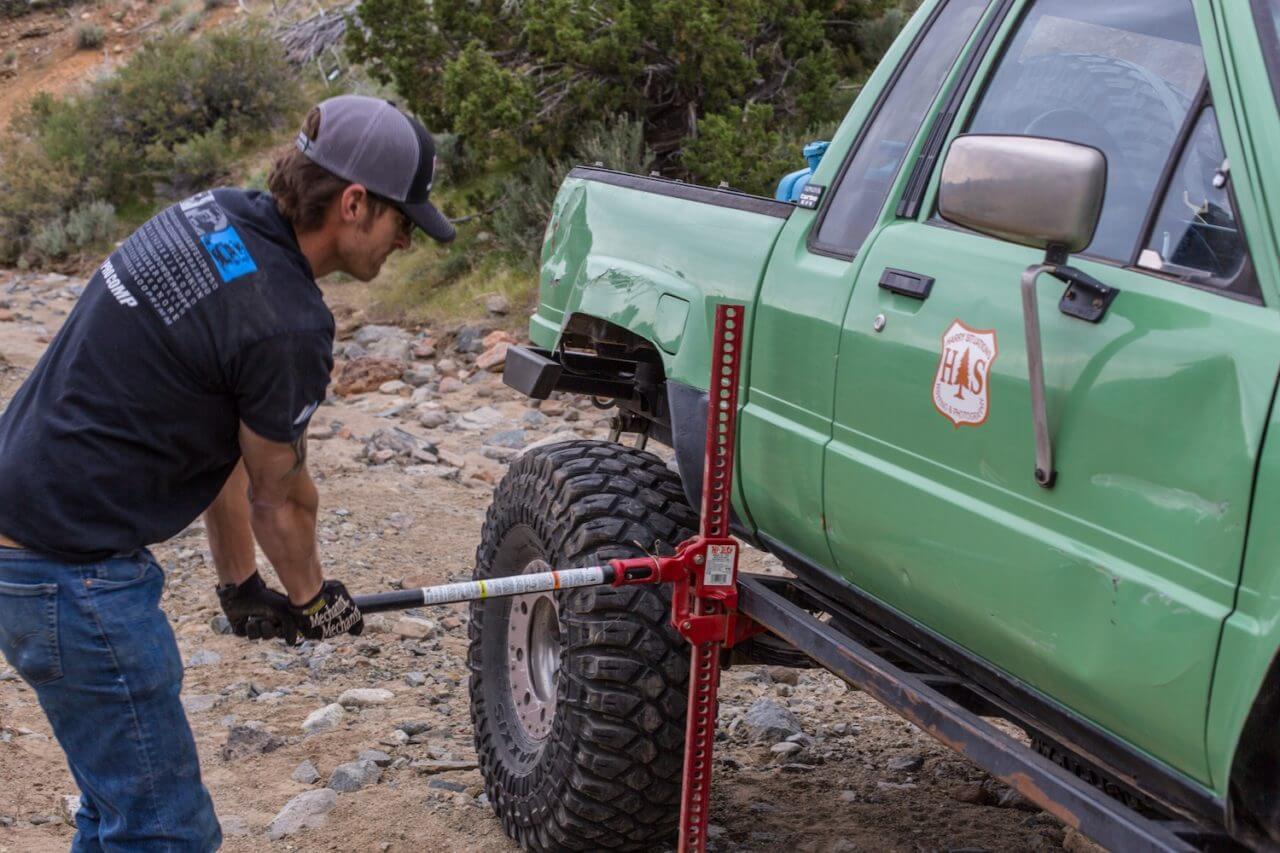
If you have a modern vehicle with plastic bumpers, a Hi-Lift probably isn’t the right choice for you. The Hi-Lift has a foot that mounts under your steel bumpers or rocksliders and lifts the vehicle from the chassis. We strap the axle to the frame to keep the suspension from extending to limit how high we need to lift the jack in order to get a tire off the ground.
Hi-Lift Jack
The Hi-Lift is the jack by which all other off-road jacks are measured. Simple, inexpensive, and able to lift incredibly high, it is easy to see why. The Hi-Lift operates by alternately walking two climbing pins up the holes in the main bar, which is available in 30, 48, or 60-inch lengths. One pin holds the load as the other is released and moved to the next hole above when raising a load (or below when lowering a load). You can use a Hi-Lift to clamp, spread, or even winch (although we don’t recommend it). They aren’t without their quirks though. The higher you lift, the more unstable the jack becomes, and the more difficult the jack becomes to raise. We have seen jacks slide out from under vehicles, and see the handle snap up and destroy everything in its path. Most of the issues can be resolved with safe usage and keeping the walking pins well lubricated so they do not stick.
Pros
- Wide range of lifting
- Low cost
- Huge number of accessories available
Cons
- Can be dangerous if not used properly
- Heavy
- Unstable at full extension
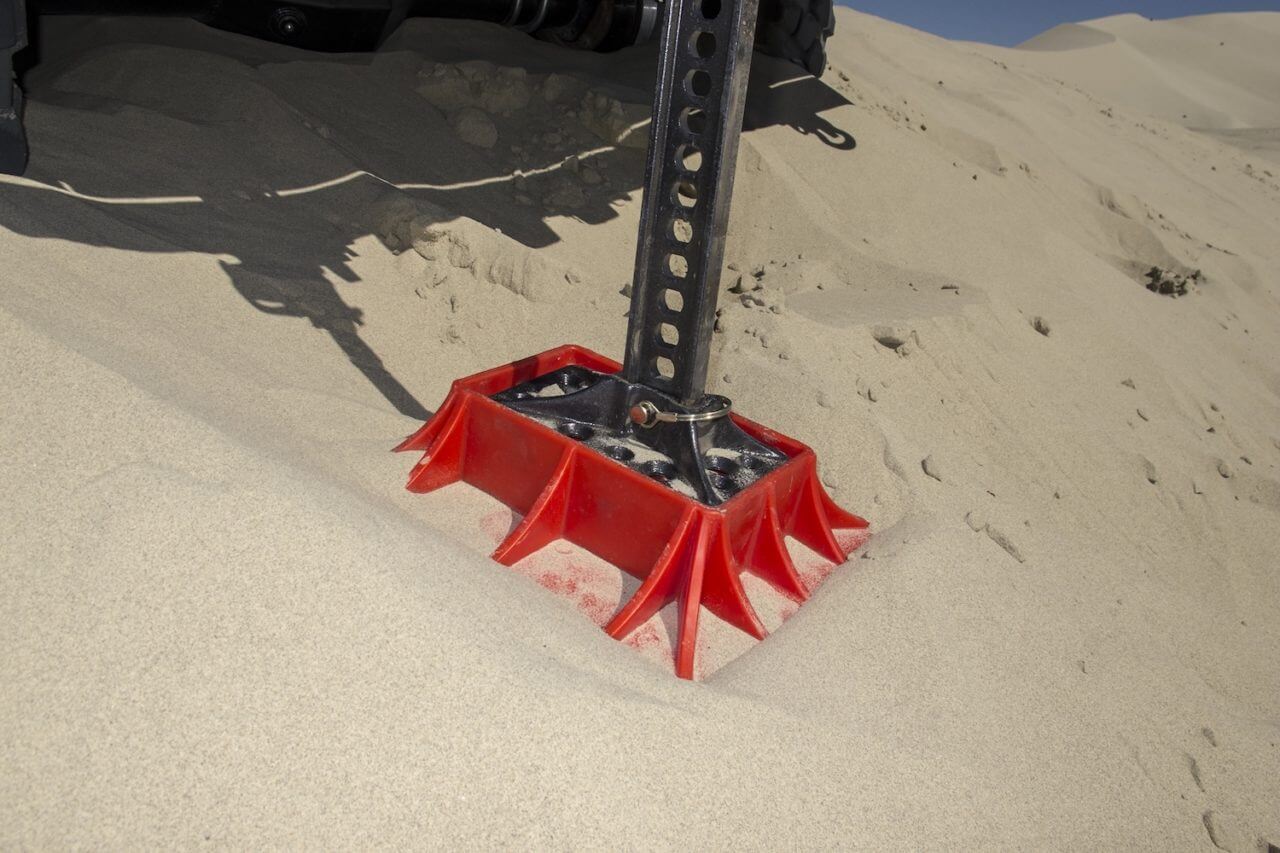
Hi-Lift’s Off-Road Base is useful in soft terrain like sand, where the wider footprint keeps the jack from sinking. One of the most appealing aspects of the Hi-Lift is that over its 125-year history there have been a bevy of accessories introduced to do everything from safely mount your jack to use it to lift from a tire.




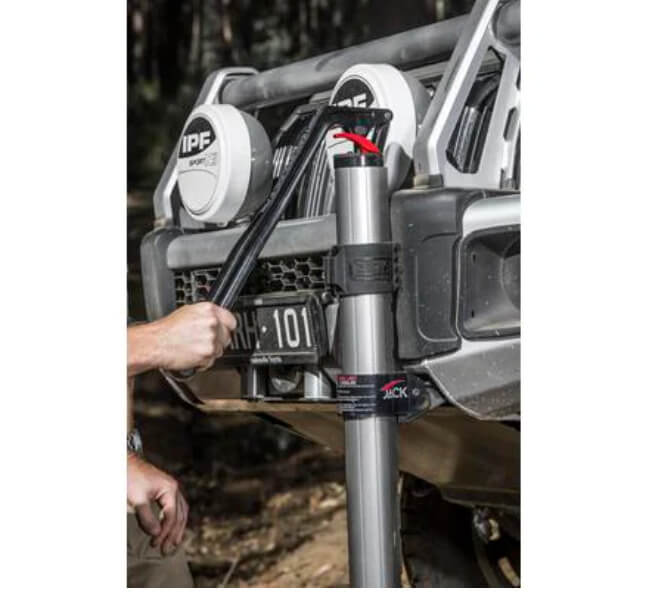
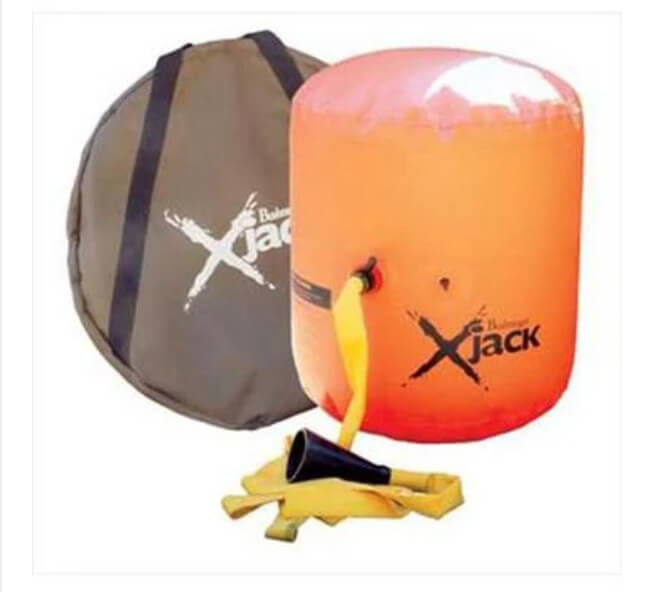
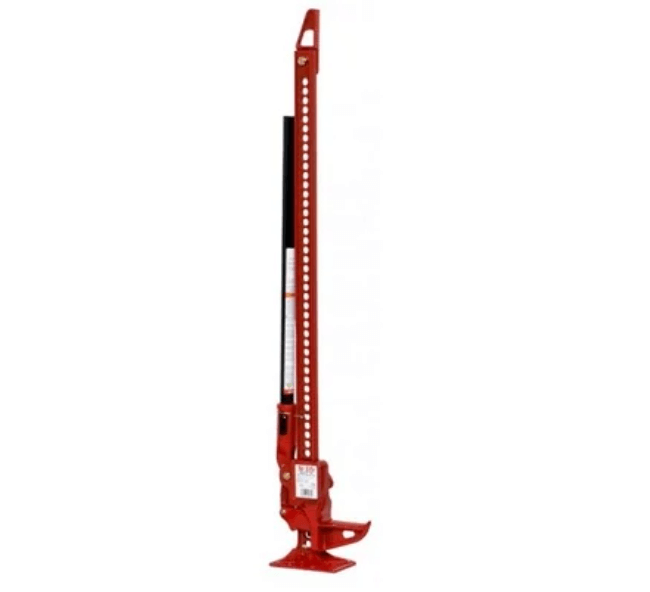
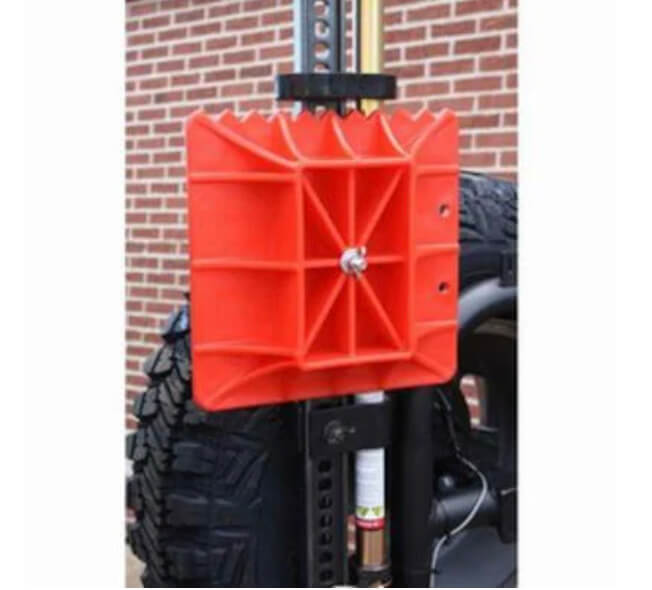
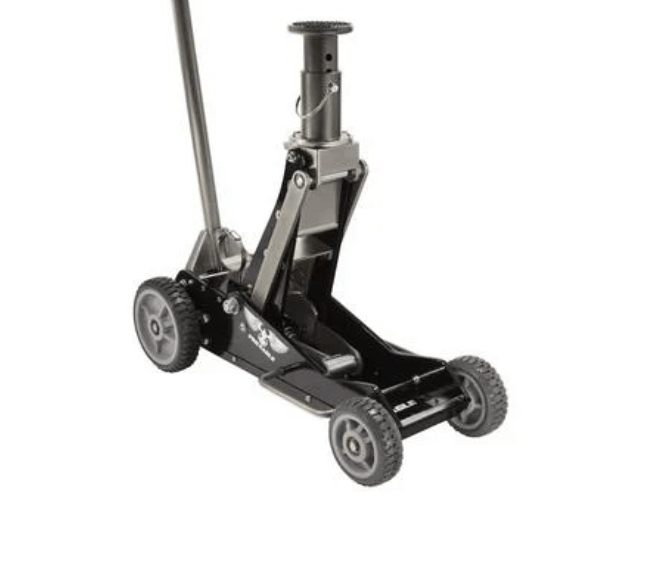
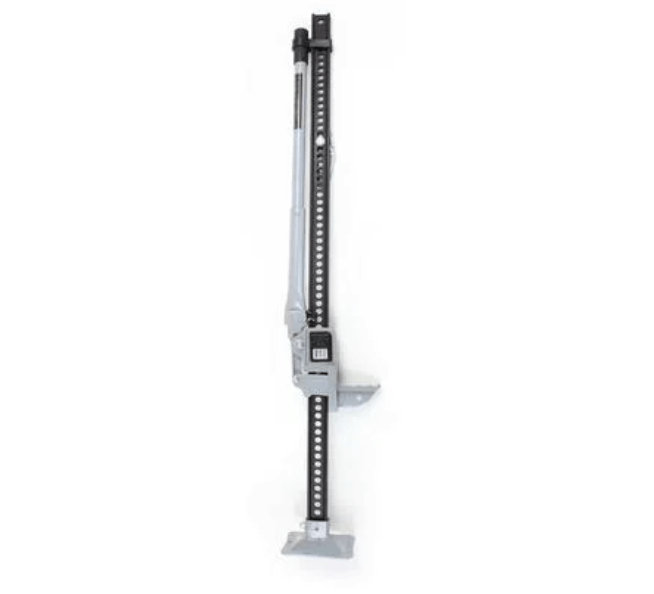
2